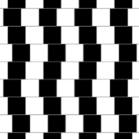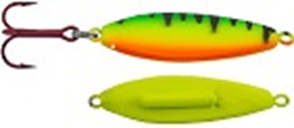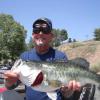Leaderboard
-
in all areas
- All areas
- Images
- Image Comments
- Image Reviews
- Albums
- Album Comments
- Album Reviews
- Topics
- Posts
- Stories
- Story Comments
- Story Reviews
- Classified Ads
- Classified Ad Comments
- Classified Ad Reviews
- Records
- Record Comments
- Record Reviews
- Websites
- Website Comments
- Website Reviews
- Status Updates
- Status Replies
-
Custom Date
-
All time
February 2 2011 - April 23 2024
-
Year
April 23 2023 - April 23 2024
-
Month
March 23 2024 - April 23 2024
-
Week
April 16 2024 - April 23 2024
-
Today
April 23 2024
-
Custom Date
12/22/2021 - 12/22/2021
-
All time
Popular Content
Showing content with the highest reputation on 12/22/2021 in all areas
-
I mostly make hardbaits. I started making my own in-lines over the past 5 years for pike primarily. I have only used craft store stuff for a couple of years. I am not an expert but it seems to be the same stuff. So far on the stuff I have tied they have held up well and the color has not bled out yet. I have heard the dye can bleed out but I have not seen it yet. If I were making baits for sale, I would want to use it for a longer period to be sure. For my personal use, the savings are worth using it. I would recommend going to a craft store to pick the best packs and make sure the feathers aren't mangled in the package. Some of the packages I saw in the store looked pretty crumpled and beat up. https://www.youtube.com/watch?v=KHUrrhxgEUk2 points
-
2 points
-
I've not seen anything for spindle blanks. But there are plenty of CNC wood engravers that you could make half sides of crankbaits with to make mold masters. You could also probably make halves of any lure to though wire. I've contemplated this but never pulled the trigger and i just do low volume and like to carve lol.2 points
-
As most have stated - every process has it's plus/minus as with everything in this hobby - you have to pick your poison and learn to deal with the route you choose. If staying with a "manual/hand" method of creating lure blanks is of interest - a carving duplicator is probably what you need to look for. This was on EBAY (https://www.ebay.com/itm/143953712063?hash=item21844f53bf:g:KpsAAOSw5VFWKTVN). Not saying get this one - but should give you an idea of what to look for - or DIY your own. They make CNC lathes - I've even seen small/desktop ones... but You'd still need to learn CAD and programming and unless you want to make "spook" type topwater blanks it can't handle non-spindle type shapes. 3D printing is great - has a ton of benefits - but is labor intensive if you don't already have the CAD skills - and even then you still have to process the part (sand/smooth/etc). Realistically - if you are happy with resin baits - making one - then a mold and pouring multiples is probably the best method if you want to keep cost down to start with. J.2 points
-
Let me expand on the advantages of 3D printing of baits. Once you have a CAD model that works for you, it is little more than a push button exercise to produce more bodies. There are various materials available, but I will not discuss further here, it is up to you to research. The print is slow, but for a small crank bait, 4 or 5 could be printed per run on most budget machines. We are basically talking low volume production. The HUGE advantage is that you can produce lures that are impossible by injection molding and/or casting. Features such as concave lips, lips with sharp edges, external sharp corners. You can produce 3D pectoral fins as discussed in a recent post on sculpin fish, for that extra realism. If your intention is to one day hit the BIG time and get your lure injection molded, you can emulate the injection molding and check that the lure works before spending thousands on expensive tools, there is no money back policy on tools that produce duds. Dave2 points
-
I would think that one of the problems with a spindle lathe would be that the piece would have to be symmetrically straight like a baseball bat or a table leg. A lathe would not be able to cut eyes, fins, a lip...or even have a tail curving down. I have made some lures with a 3D printer (straight PLA) and was not happy with the result. First of all, sanding PLA cant be good for the lungs. It's defiantly harder than wood. I have had some latches I made pretty much just break after a year of so outside (UV). I probably should have use something other than PLA. 3D printing is a little new to me so Im sure there is something about it I'm missing. I do know they make a wood filament that 70%PLA and 30% wood derivative (haven't use it). I do think eventually 3D lure making will be popular.2 points
-
Several people have posted 'duplicator' machines, I myself have built a couple. Computer NC control is an option, but all the machines that I have seen are manual motor driven. Commercial duplicators are very expensive, in the region of $50K but I built mine for around $200, not brilliant, but I was very happy with the results. Try a TU search. 3D printing Is a viable option. I have designs, but I have not printed one off myself as yet. To do the job properly, you will need to master a CAD software to a reasonable standard. You will also need to get involved with densities, COV (center of volume) and COG (center of gravity), to have any chance of creating a lure that floats how you want it to do without a lot of tedious trial and error. I hope to source a 3D printer locally one day as I have so many projects ready for printing, not just fishing. There are local printing services that I have used, but they are just too expensive. Dave2 points
-
Dollar stores, craft stores, pets, old Xmas tinsel and whatever random places you see stuff worth while I hunt and held a trappers license so I got a lot of stuff from this too A good friend of mine is a big taxidermist that has clients that send him animals from all over the world. I got a ton of trim ends from him. Lots of the materials are not cheap and hard to come by1 point
-
Thanks again for all the feedback! Ended up doing some more research and the Size 9 blades from leaders and lures are the equivalent to the 8’s I got from luremaking last year. The price hurts…but when looking for something specific I guess I should expect to pay a premium. Bought 9’s and 10’s in copper and black nickel so I can play around with different colours and sizes. Going to make a trip to a craft shop to see what I can find for Marabou. I need to practice so that looks like a good cheap option. Once I have it down, there is a fly shop near my office in Toronto, gonna check them out and also give Latulippe a try. Thanks again! Dan1 point
-
In addition to posting in the Wire Baits Forum, it would help with a picture or link to the jigs you are talking about. They come in a wide variety of shapes. It’s tough to envision what to try without a picture of the jig. If you are talking more of a flutter spoon, on the larger ½ oz. lures, you could use a ¾” plastic jig rattle. Brass rattles are pricey. You could make some out of spent .22 ammo for the larger lures. Glass rattles are fairly fragile and would not hold up well on a spoon. https://www.lurepartsonline.com/Jig-Skirt-Rattles On a typical flutter spoon, you would want to put the rattle on the side that is on top when the spoon drops in the water and down the centerline to keep the flutter action. Typically, flutter spoons are tail weighted so the rattle would sit a bit towards the tail end from the midpoint. This will require hot glue and testing in clear jug of water to make sure you didn’t affect the action. Once you find the right location, you could permanently attach it with epoxy/gorilla glue, then paint the rattle and clear coat to ensure it doesn’t fall off. On the smaller 1” lures, you may have to make your own rattles. The initial cost would be more than a couple of lures but you could make hundreds of rattles in any length you want. Find some small plastic tube, small coffee stirring straws, water balloon filling straws from the bunch packs that attach to a garden hose, check craft and party stores or Amazon for those. You can also make rattles out of small brass tubing but that adds cost. There are all sorts of ball bearings on Amazon including tiny ones (3/64”, chrome steel are $10 for 2,000) . Skip to 6:00 on the video for making the rattles. https://www.youtube.com/watch?v=cfabbOYSpxo https://www.amazon.com/Chrome-Steel-Bearings-G5-5000-Balls/dp/B01AX6VFZO/ref=sr_1_69?crid=3V1FYLBH6ZYPI&keywords=3%2F64%22%2Bprecision%2Bball%2Bbearings&qid=1640065841&sprefix=3%2F64%2Bprecision%2Bball%2Bbearings%2Caps%2C91&sr=8-69&th=1 If you are talking more of a jighead as opposed to a spoon, you could make small rattles and tie them to the underside of the hook shank with matching colored fly thread and use clear nail polish to seal.1 point
-
Big Epp Just a word of caution about live uncured road kill type of free resources. Organics like tails, feathers, furs have a natural tendency to carry with them bugs parasites larva etc. Some still have active degrading fleshy left overs. Do some research about prepping them or treating them to avoid un wanted elements creeping into your other materials possibly ruining a high priced cape or hackle collar. Some people will micro wave ( radiate) tails and fur to kill unwanted unseen pests, (not in your personal home cooking micro, use a cheep older one dedicated to only that use)... some people cure tail ends with salt to dry them up to stop wrought and odors. A lot of people protect there stuff by storing it in moth balls after treating. A some what seemingly free road kill tail can cost you a ton of lost money and material if untreated or properly prepped . I am sure your probably already aware of this but thought it might be worth a mention. I have used road kill racoon tail and grey squirrel tails ,deer tails with good success and yes you can save money by doing so. As you get further into the addictive qualities and free your creative spirit of tying. I found it so much more fulfilling and less work with piece of mind to purchase already treated products from specialty suppliers. Yes some what expensive to purchase but will last a very long time if you look after them. Bags of mixed craft stuff like feathers are very low quality in my experience and you have to sort out through a lot of substandard feathers to find the right size, length width ,lie barring etc not worth the time to me now . It is a process or evolution. I think it is limited to your budget and imagination Great hobby and pastime. Hope this helps. Happy tying.1 point
-
That's a good idea, I like that, so basically make 2 identical half's of a lure and then glue together after insering a through wire etc, makes sense and definitely worth a look into! Andy.1 point
-
Agree with what you are saying, good points you have made, the link that you shared was interesting, I've never seen that type of machine before, baffles me how it even works! Some more learning is needed I need to swat up on things. Andy.1 point
-
Some really good points, thank you for sharing, the wood filament sounds very interesting. Andy.1 point
-
Hi dave, thanks for your input my friend, I have been more and more interested in the 3D printing side of things, as always though I don't want to make an expensive mistake, I will have too take a look into CAD design and see how I go with that, I've worked on a whole lot of computer softwares during my career so hopefully I could pick it up at a basic level okay. The point you made regarding the different types of plastics has got me head scratching though! Would definitely need to do some research as I would have no idea where to start regarding materials. Many thanks Andy.1 point
-
maybe try Latulippe outdoors.canada for your maribou. I think they are out of montreal or quebec city1 point
-
Not a perfect solution, but for personal Marabou stuff sometimes i just order Mepps premade Marabou tails and make my own spinner sections. IF you cant find black nickel, there are some automotive spray meant for tinting wheels that works good on silver blades. Its transparent but you can build in layers to get the desired effect. Another thing I've done is use window tinting on them, sounds odd but similar to the prism tape some builders are using makes for a unique sound and color.1 point
-
Sorry for my late reply! Thank you for the information you have supplied it's really appreciated, all good advice & I like the ideas you have suggested trying out, as soon as I have time I will get back to the lure blanks & do more testing. On my next batch of testing I will add some pictures from start to finish so everyone has a better visual of the testing stages! Many thanks again for your help, Andy.1 point
-
Shepherd, if you don't mind could you tell us what Plastisol using? I assume M-F Sinking Soft it is? IIRC, Yamamoto 5" Senko weighs 10.7 grams or something. Are you able to get the same weight without salt or sandblast glass beads?1 point
-
At Rowhunter's suggestion, I'm starting a PVC thread. I use it for all my lure building, for the following reasons: It is totally waterproof, so I can shape a lure, and then test float and ballast it without any sealing. I have a 3 gallon bucket of water in my driveway that I use for test floating. It is buoyant. The Azek PVC decking is as buoyant as poplar, a hardwood I used to build my jointed swimbaits from. The Azek trimboard is even more buoyant, like medium density balsa. I can make really active shallow cranks with it. It is strong. The decking is as strong as any wood, for lure building, and the trimboard, although not as dense, is still plenty strong enough for any crank. And I use it for my smaller two piece jointed lures, too. I caught a 7lb largemouth with a PVC trimboard spybait I made that was 4" long, but only 7/16" thick, and I had drilled several 3/16" holes up from the belly for my ballast. She ate the rear hook, and the bait held up fine. Both are strong enough to hold screw eyes with just a small pilot hole. No need for any reinforcement, or setting into holes filled with epoxy. I usually use the gap filling/brush on super glue alone to set my hardware, and a lot times my bills, too. I use the accelerant (thank you Ben) dripped onto the glue to help it set quickly, once things are positioned. It machines and carves well. Although the sanding dust is nasty, because it sticks to everything, including my sinuses, PVC is easily machined and shaped with the same tools I used for wood. As with any work, sharp tools work best. I cut out my bait profile, and lip slot, with a bandsaw, and try to drill any ballast hole while the bait has the flat sides, so I can drill straight holes with my drill press. I use an oscillating belt sander with an 80 grit belt to do my major shaping, working from a centerline I put on the bait after I've sanded the bandsaw marks off. I "carve" details with a dremel sanding drum, and drill out my eyes with a multi-spur bit on a drill press. I typically sand down from 80 grit to 120 grit with a vibrator sander, and finish up with a small piece of sandpaper to get edges and details softened. Because it has no direction-oriented grain, it carves really well with sharp tool. It can be laminated into bigger lure blanks using the same PVC glue plumbers use for PVC pipe, or you can use super glue. If you use both the PVC primer and the glue, the two pieces actually melt into one solid piece. As long as the two surfaces are flat and mate, you're good to go. It paints well. I can shoot Wicked White as a base coat onto a raw PVC bait, heat set it, and never have any separation problems with my paint schemes. When I've had occasion to remove some paint to modify a bait, I've had to sand down to the PVC to get the paint off. It never peels. Occasionally, heat setting too hot can cause trapped air to bubble up under the seal coat, so I generally seal baits by rubbing crazy glue, or thinned epoxy, over them before I paint, if I want a super smooth bait. But any bubbles that do appear can be popped by the sharp tip of an exacto knife, and they lay right back down when I press them with my exacto knife handle. I've never had any baits with popped bubbles fail. And, because it is totally waterproof, I don't have to worry about nicks and scuffs from rocks and hooks. Any top coat works. I've used epoxies, urethanes, and concrete sealers, with no problems. In short, it make lure building faster and easier, and that make it even more fun, so why I use it.1 point






